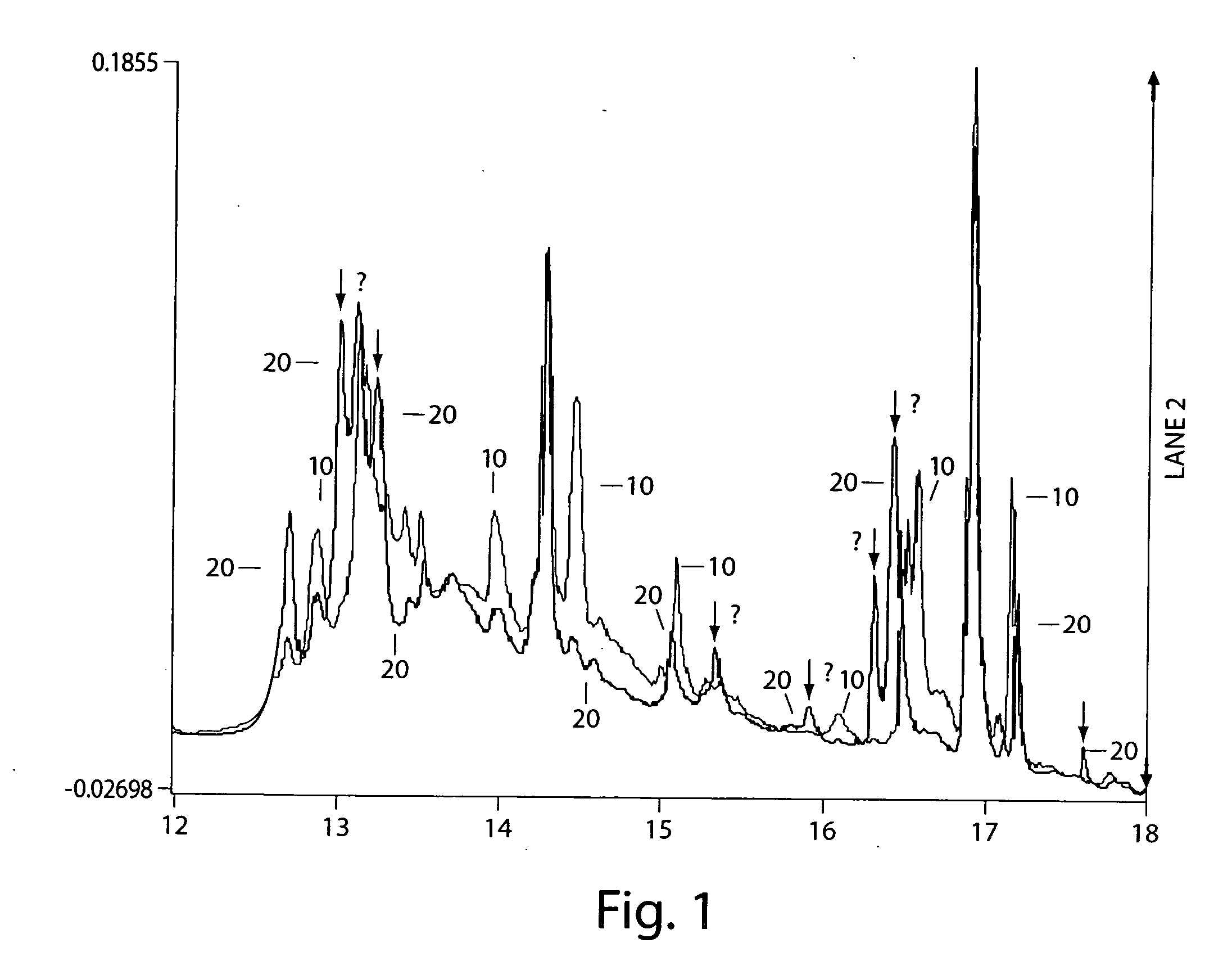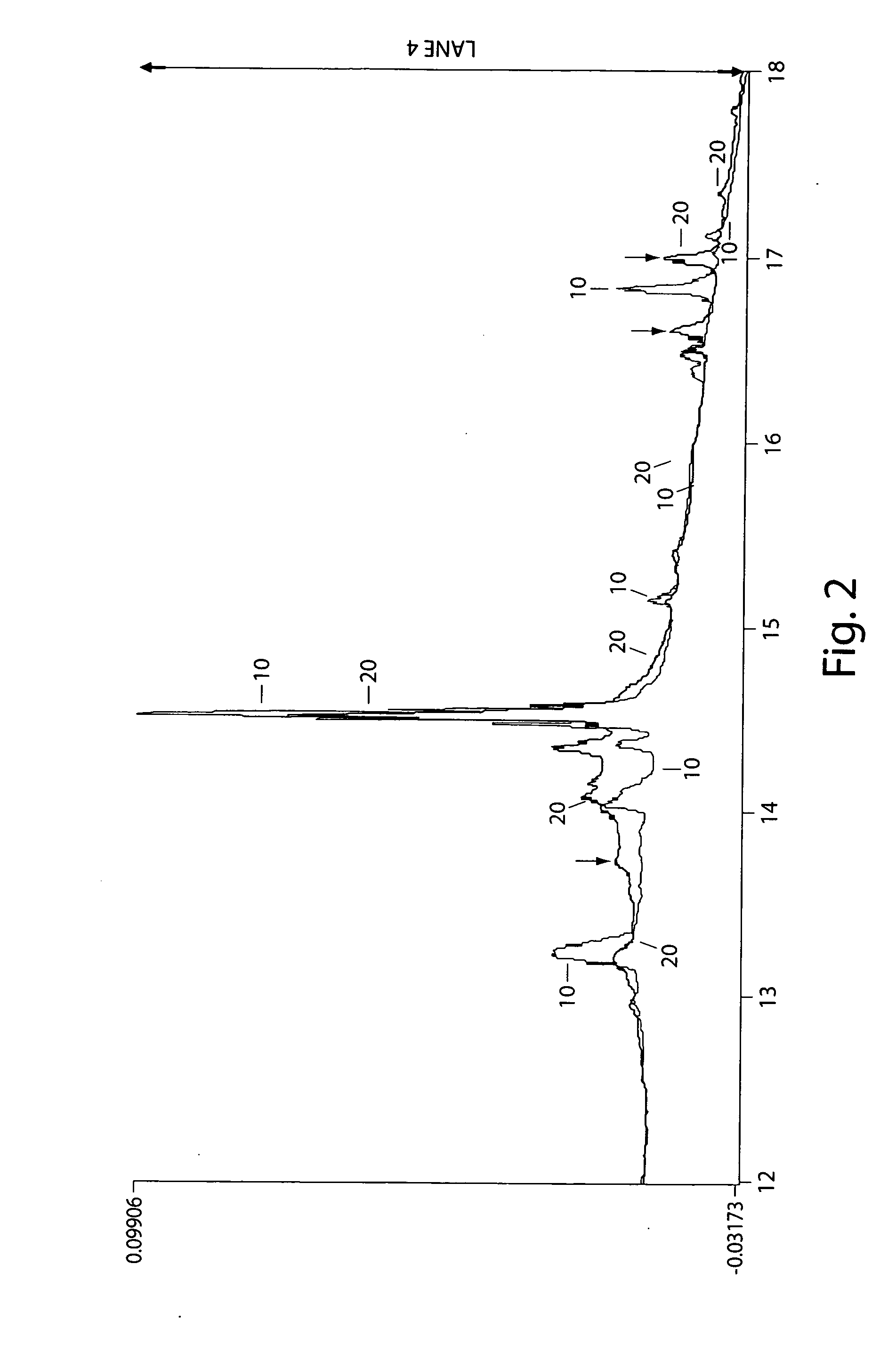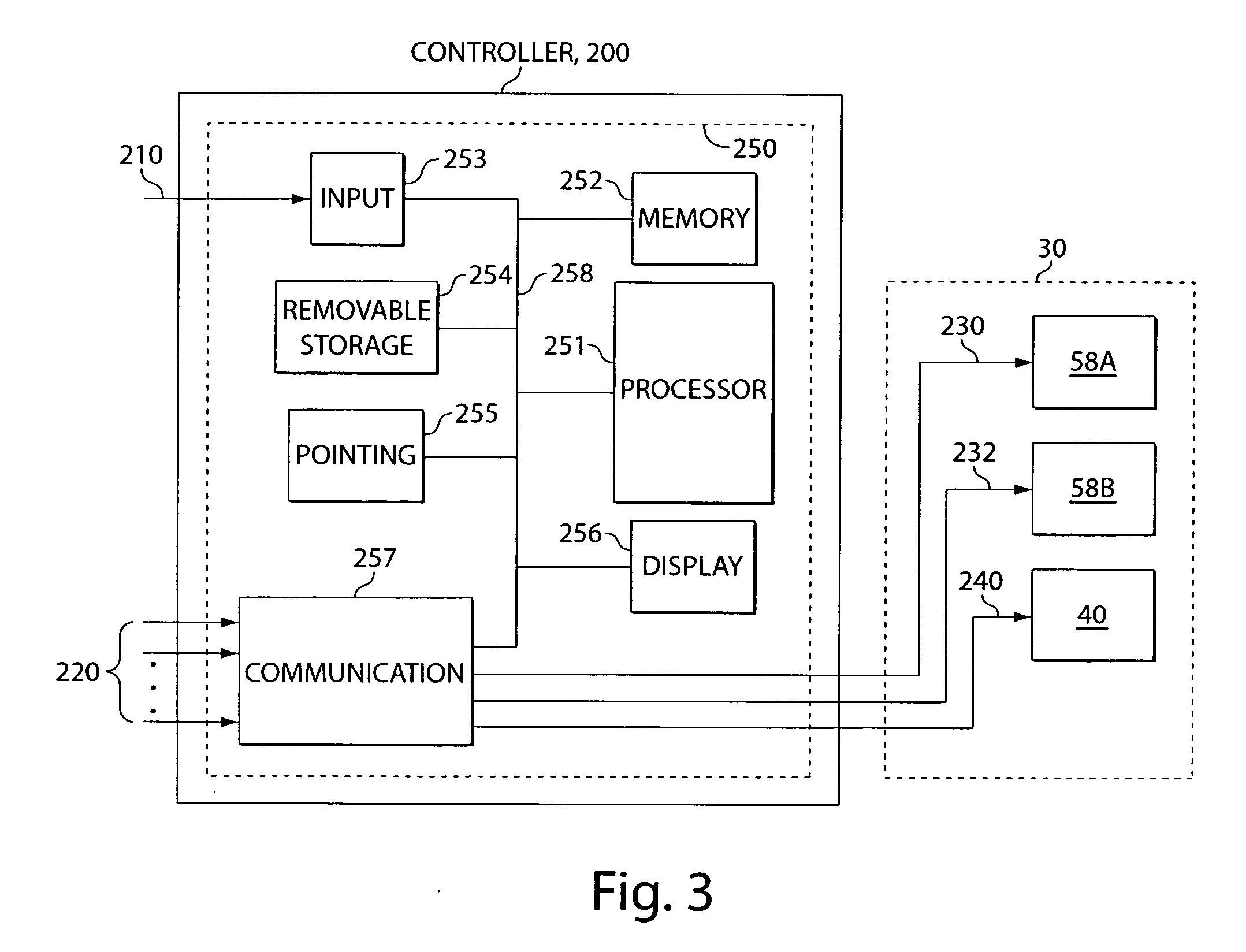Systems and methods for characterization of molecules
a technology of molecules and systems, applied in the field of separation, fractionation, and/or characterization of molecules and/or biomolecules, can solve the problems of inherently increasing the number of samples for further analysis, and high inefficiency of the approach
- Summary
- Abstract
- Description
- Claims
- Application Information
AI Technical Summary
Benefits of technology
Problems solved by technology
Method used
Image
Examples
example 1
[0121] In this example, it was demonstrated that partitioning of a mixture can be used to or assist in revealing structural changes in proteins.
[0122] Human serum albumin (fatty acid and gamma-globulins free), concanavalin A, cytochrome c from horse heart, beta-lactoglobulin A from bovine milk, beta-lactoglobulin B from bovine milk, ribonuclease B from bovine pancrease, lysozyme from chicken egg white, o-phthaldialdehyde reagent (complete), and Bradford Reagent were purchased from Sigma Chemical Company (St. Louis, Mo., USA) and used without further purification. A stock solution of a mixture of 25.6 mg albumin, 12.9 mg concanavalin A, 8.2 mg cytochrome c, 12.2 mg ribonuclease B, 8.4 mg of beta-lactoglobulin A, and 11.5 mg beta-lactoglobulin B was prepared by dissolving in 40 ml of water. Lysozyme in the amount of 2.1 mg was dissolved in 8 ml of this stock solution. Relative measures of interaction of species in these mixtures were determined by subjecting these protein solutions t...
example 2
[0129] In this example, it was demonstrated that the overall partition coefficients of total human plasma proteins from patients with a particular disorder, as compared to healthy donors, are different under particular partition conditions, and that this can serve as a basis for determination of physiological conditions of biological systems. It was also demonstrated that these conditions may be used for fractionation of the plasma for further analysis of the plasma fractions by a standard proteomics approach. The overall procedure can then be used for discovery of particular proteins differing in amount and / or structure in the original samples. These proteins can also subsequently be used as markers specific to the disorder. This example does not intend to provide definite data and does not define a definite procedure for discovering markers that underlie the particular clinical condition described; rather, it should serve as an illustrative example only.
[0130] Human plasma sample...
example 3
[0143] In this example, it was demonstrated that relative measures of interaction, exemplified herein as the partition coefficients of aqueous two-phase partitioning systems, of certain human serum proteins from patients with a particular physiological condition, were different than those corresponding to healthy donors, and that such differences could serve as a basis for determination of physiological conditions of biological systems. Selection of partitioning conditions suitable for discovering changes in the structure of certain proteins, and / or in their interactions with other proteins in serum, was also illustrated. Furthermore, this example illustrates one method of identifying particular proteins as potential biomarkers from a group of proteins in biological fluids using methods described in the present invention.
[0144] Serum samples from patients diagnosed with early stage ovarian cancer and healthy women were obtained from Gynecologic Oncology Group (GOG, Columbus, Ohio)....
PUM
| Property | Measurement | Unit |
|---|---|---|
| temperature | aaaaa | aaaaa |
| total volume | aaaaa | aaaaa |
| volume | aaaaa | aaaaa |
Abstract
Description
Claims
Application Information
 Login to View More
Login to View More - R&D
- Intellectual Property
- Life Sciences
- Materials
- Tech Scout
- Unparalleled Data Quality
- Higher Quality Content
- 60% Fewer Hallucinations
Browse by: Latest US Patents, China's latest patents, Technical Efficacy Thesaurus, Application Domain, Technology Topic, Popular Technical Reports.
© 2025 PatSnap. All rights reserved.Legal|Privacy policy|Modern Slavery Act Transparency Statement|Sitemap|About US| Contact US: help@patsnap.com



